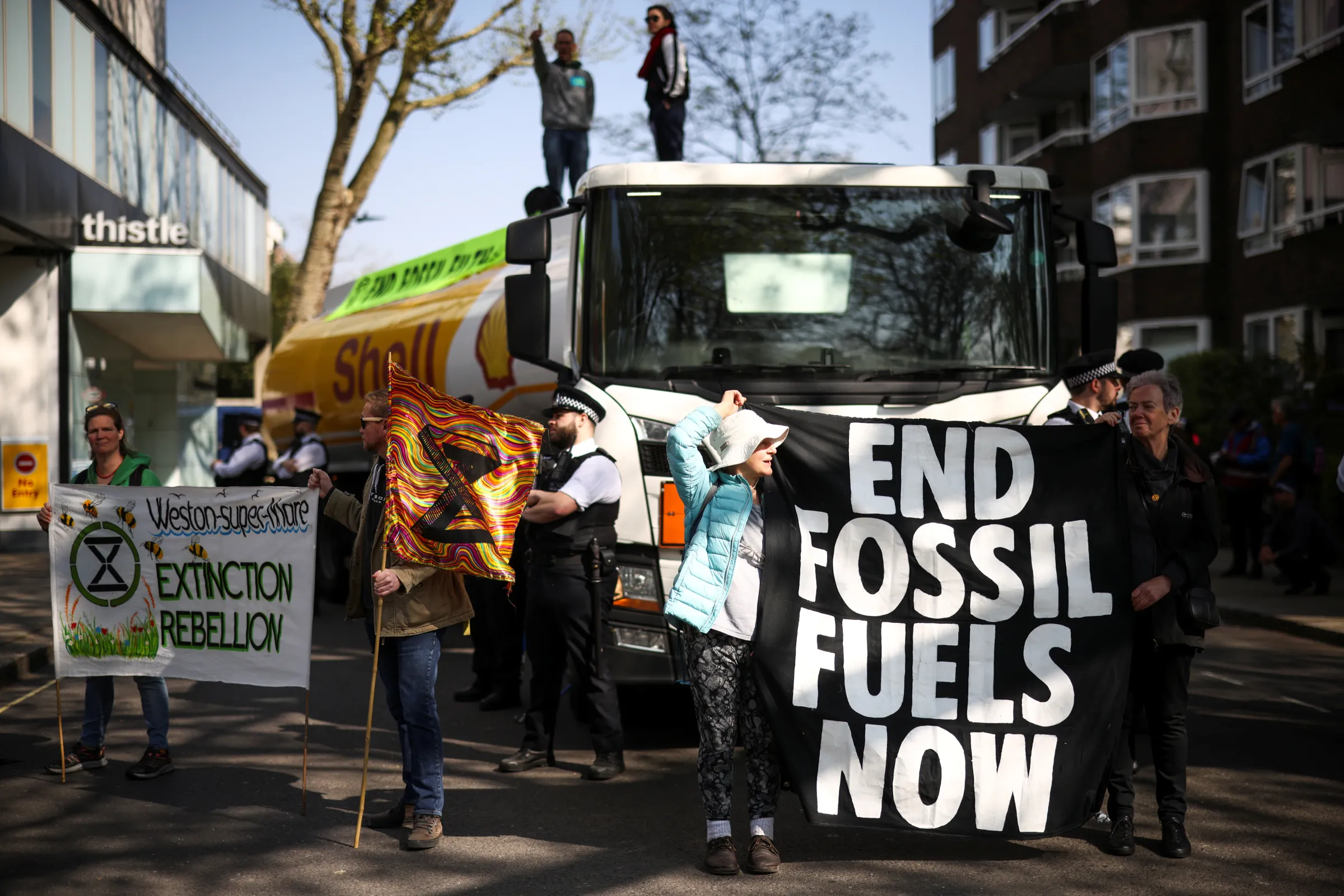What is the Energy Charter Treaty and how has it been amended?

Activists from Extinction Rebellion occupy an oil tanker during a protest calling for an end to fossil fuels, in central London, Britain, April 16, 2022. REUTERS/Henry Nicholls
What’s the context?
Signatories to the Treaty, which lets fossil fuel firms sue when climate policies hit profits, agree to modernise terms
- Global accord lets oil firms sue over green policies
- Pact signatories agree to reforms
- Eleven European countries have quit treaty
LONDON - Signatories to the Energy Charter Treaty, an agreement that allows fossil fuel companies to sue governments over climate policies, have adopted changes meant to address concerns that the pact undermines efforts to fight climate change.
The 1998 Energy Charter Treaty (ECT) has allowed firms and investors to sue governments on the grounds that their profits could be hurt by policies aimed at cutting planet-heating emissions from burning fossil fuels.
Critics of the ECT say the threat of legal action could deter governments from enacting clean energy policies that are vital to achieving international climate goals.
The amendments were adopted at December's meeting of the Energy Charter Conference and mark the culmination of four years of talks aimed at aligning the pact with the climate goals of the Paris Agreement to limit global warming.
Parties agreed to introduce a "flexibility mechanism" that allows countries to end investment protection for fossil fuels in their territories and to expand the list of energy materials covered by the pact.
Since the start of the negotiations, 11 European countries have walked away from the Treaty, saying the proposed changes did not go far enough.
In May, European Union formally adopted a decision to withdraw from the Treaty as a bloc, although it will allow member states to remain part of the ECT, if they choose.
Here are some key features of the ECT:
What is the Energy Charter Treaty, and why was it created?
The ECT is a legally binding pact with some 50 signatories, mainly countries in Europe, Central Asia and the Middle East, plus the EU.
It was drawn up at the fall of the Soviet Union to protect European energy firms with fossil fuel assets in ex-Soviet states.
The ECT aims to promote energy security by protecting energy firms against risks to their investments and trade, such as having their assets seized, or contracts breached.
It grants the right to challenge governments over policies that could harm investments - not just in fossil fuels, but also in hydropower, solar, wind and other clean energy sources.
The cost of the ECT
Legal claims made by fossil fuel companies challenging environmental measures are on the rise, according to the International Institute for Sustainable Development .
Experts warn that the risk of legal action could cause governments to delay policies to reduce greenhouse gas emissions, such as phasing out oil and natural gas production.
ECT claims can be pursued through international arbitration channels called investor-state dispute settlement (ISDS), where it is common for the private sector to be awarded large payouts.
Fossil fuel companies have been awarded at least $82.2 billion by states in disputes brought under investor-state dispute settlement since 1977, a report from International Institute for Environment and Development and the Columbia Center on Sustainable Investment found.
A study by Boston University, Colorado State University and Queen's University in Canada estimates that the costs of possible legal claims from oil and gas investors challenging government action to curb fossil fuels could reach $340 billion.
How did the process of modernisation unfold?
Negotiations to bring the treaty in line with the Paris Agreement started in 2020.
But last year, the European Commission, the EU's executive arm, proposed the whole bloc withdraw from the ECT, after failing to get member states to agree to proposed changes.
Countries opposed to the new amendments said they did not go far enough to align the ECT with climate policies. Opting out of fossil fuel investment protection would apply immediately for new investments but existing investments would be protected for at least another decade.
The amendments also expand the list of energy materials protected by the ECT, including to hydrogen and biogas, which climate groups warn increases the risk of harmful ISDS claims.
European countries started to pull out of the pact in 2022 over climate concerns.
Ireland, Denmark and Portugal announced their withdrawals in 2023, after Spain, the Netherlands, Poland, France, Germany, Luxembourg and Slovenia walked out in 2022.
Britain announced in February it would quit the treaty.
Italy was the first EU country to quit the treaty, in 2016, citing budget restrictions.
What happens next?
The amendments to the ECT will apply provisionally from September 2025.
A sunset clause that allows countries to be sued for 20 years after quitting the treaty will still apply to the European countries that have announced their plans to leave.
Climate groups are calling for exiting countries to make a deal among themselves to not apply the sunset clause, ensuring that ECT disputes within the EU and between the EU and UK would no longer be valid.
This article was updated on Dec 4, 2024, after the Energy Charter Conference voted to adopt reforms to the ECT.
($1 = 0.8246 pounds)
(Reporting by Beatrice Tridimas; Editing by Helen Popper)
Context is powered by the Thomson Reuters Foundation Newsroom.
Our Standards: Thomson Reuters Trust Principles
Tags
- Clean power
- Climate finance
- Fossil fuels
- Climate policy














